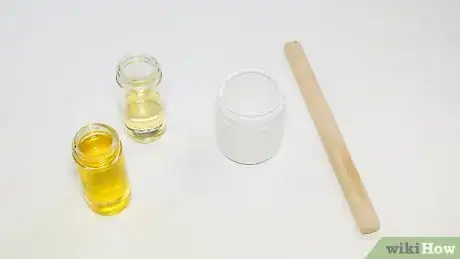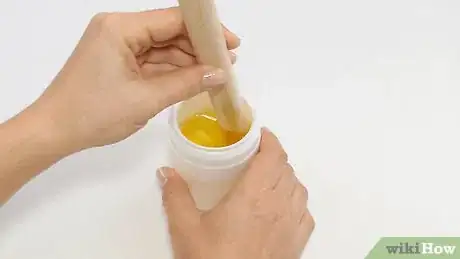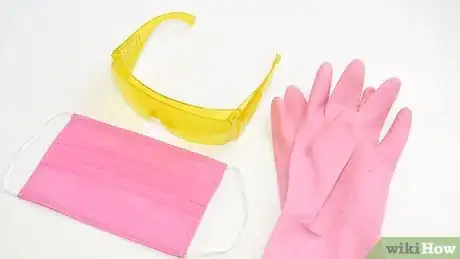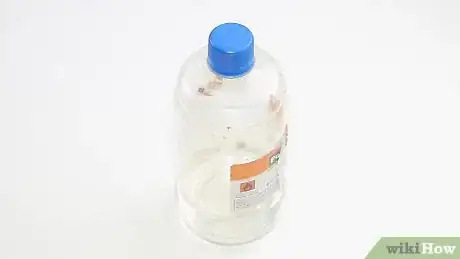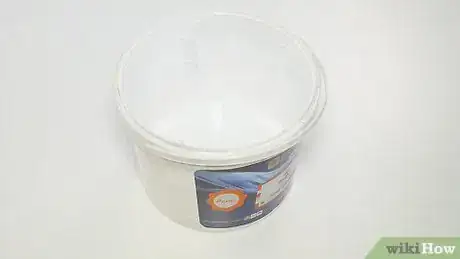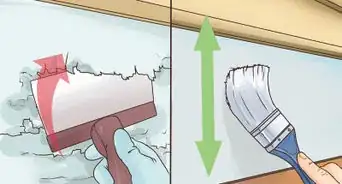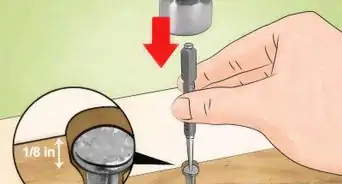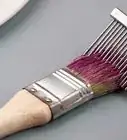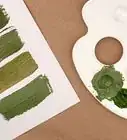This article was co-authored by wikiHow Staff. Our trained team of editors and researchers validate articles for accuracy and comprehensiveness. wikiHow's Content Management Team carefully monitors the work from our editorial staff to ensure that each article is backed by trusted research and meets our high quality standards.
The wikiHow Video Team also followed the article's instructions and verified that they work.
This article has been viewed 435,650 times.
Learn more...
Traditional paint thinners can be harsh, and you might be looking for a milder option. If so, whip up a batch of mixed linseed and lemon to use when needed to thin oil paints. If you need to thin some paint and don't have any traditional thinner around, acetone or mineral spirits can each be used to thin oil paints. As long as you work in a ventilated area and follow the proper ratios when thinning paint, these alternative thinners should work perfectly fine. If you’re working with acrylic or latex paint, thinning with water will do.
Steps
Making an Oil Thinner for Oil Paint
-
1Gather your materials. You’ll need both lemon oil and linseed oil as well as a mixing bucket and stirring stick. All of these materials should be available at a hardware or paint supply store.
-
2Mix lemon and linseed oil. Measure out ¼ cup (59 ml) lemon oil and a cup (237 ml) linseed oil into a mixing bucket. Stir the ingredients lightly with your stirring stick.[1]Advertisement
-
3Thin paint with the lemon and linseed oil mixture. When you’re to work with your paint, add the mixture little by little, stirring the paint with a stick as you do. After adding about half a cup (118 ml) of the lemon/linseed mixture, allow the paint to rest.[2]
Thinning Oil Paint with Common Solvents
-
1Put on a facemask, safety goggles, and rubber gloves. Solvents used as paint thinner can give off harsh, harmful fumes. Wear protective gear to reduce irritation. Change into old clothes so it won’t matter if they’re discolored by drops of thinner or paint.[3]
-
2Work in an area with good airflow. The fumes from solvents can be dangerous if they build up. For this reason, you should always thin paint in a well-ventilated location. Work outside, if possible, and open doors and windows, if you have to work indoors.[4]
- Rooms with poor airflow can be improved by putting a box fan in a window or door.
-
3Choose your solvent. Mineral spirits or acetone are acceptable thinners that can be used as an alternative to traditional ones like turpentine. Both of these common household products can be used to thin oil-based paint. You can purchase either at your local hardware store or home center.
-
4Measure out the solvents to use them as thinner. Mineral spirits or acetone have to be used in the proper ratio to work as a thinner for paint. Always use one part solvent to three parts paint.
- When you’re ready to use the solvent to thin paint, add half of the thinner to the paint, and stir thoroughly. Then add the rest and stir again.
Using Water as a Thinner for Acrylic and Latex Paints
-
1Use a large bucket to thin the paint in batches. Thinning paint in large batches will ensure more consistent quality. If your project will require a few buckets worth of paint, try to keep the consistency of each batch as close as possible.
-
2Add paint and water to the bucket and stir. Use a half cup (118 mL) of room temperature water for every gallon (3.78 L) of paint. Pour the paint into the bucket and follow it with the water. Stir the mixture thoroughly with a paint stirrer.
-
3Tweak the consistency as necessary by adding small amounts of water. If you’re looking for a runnier paint, you can continue adding water to get the consistency you need. Otherwise, you can leave the paint on the thicker side.
- Take your time when adding water to the paint. You can always add more, but if you add too much, you may end up needing to thicken the paint.
Community Q&A
-
QuestionCan gas be used to thin paint?
 Community AnswerIt can be used to thin oil paint only and it will be VERY FLAMMABLE. Thinning oil paint with gasoline is not something that should be done indoors, and a proper respirator rated for organic vapors should be worn while preparing the mixture AND while applying the paint after it has been thinned.
Community AnswerIt can be used to thin oil paint only and it will be VERY FLAMMABLE. Thinning oil paint with gasoline is not something that should be done indoors, and a proper respirator rated for organic vapors should be worn while preparing the mixture AND while applying the paint after it has been thinned. -
QuestionHow can I measure out a 3:1 ratio?
 Community AnswerTry: 3 cups paint, 1 cup thinner. Or, 6 cups paint, 2 cups thinner. Use measuring cups made of appropriate materials. For larger amounts, use a 1/2 gallon-gallon container.
Community AnswerTry: 3 cups paint, 1 cup thinner. Or, 6 cups paint, 2 cups thinner. Use measuring cups made of appropriate materials. For larger amounts, use a 1/2 gallon-gallon container. -
QuestionCan you put nearly solid paint into a microwave oven to thin it?
 Community AnswerDo not ever do this! It can release toxic fumes and it may be flammable and cause a fire. The best approach is to make the paint thinner asa suggested in this article or go to a store and ask for a commercially prepared paint thinner. Stay safe!
Community AnswerDo not ever do this! It can release toxic fumes and it may be flammable and cause a fire. The best approach is to make the paint thinner asa suggested in this article or go to a store and ask for a commercially prepared paint thinner. Stay safe!
Things You’ll Need
- Bucket
- Stirring stick
- Solvent (oil, mineral spirits, or acetone)
- Water (for acrylic or latex paints)
References
- ↑ https://www.bobvila.com/slideshow/10-toolbox-hacks-for-your-next-diy-project-47916/diy-paint-thinner
- ↑ https://www.bobvila.com/slideshow/10-toolbox-hacks-for-your-next-diy-project-47916/diy-paint-thinner
- ↑ https://www.hunker.com/13417017/homemade-paint-thinner
- ↑ https://www.hunker.com/13417017/homemade-paint-thinner
About This Article
If you want to make paint thinner, try using mineral spirits or acetone, which you can purchase from a hardware store. First, measure out the spirits or acetone in a separate container so you have 3 parts paint to 1 part thinner. Then, pour half of your chosen thinner into your paint and stir thoroughly. Once the mixture is combined, pour in the rest of your thinner and stir well. Remember that solvents like acetone and mineral spirits can give off harmful fumes, so work in a well ventilated area. You should also wear a safety mask for extra protection. For tips on how to make a paint thinner using lemon oil and linseed oil, keep reading!
